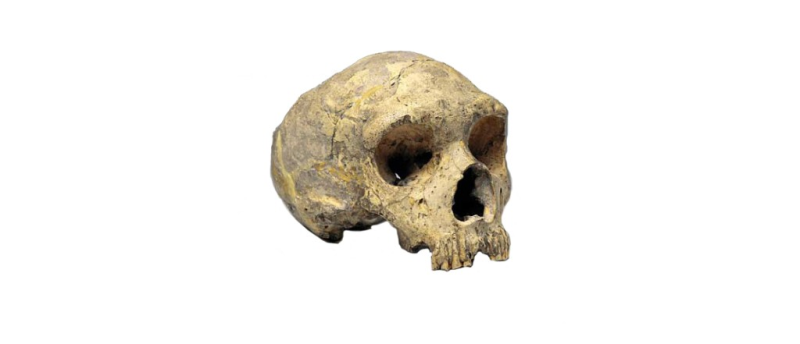Ancient DNA extracted from Neanderthal fossils of Gibraltar for the first time

A new collaborative study, led by the Natural History Museum and the Max Planck Institute for Evolutionary Anthropology, has extracted ancient DNA from the Neanderthal fossils of Gibraltar for the first time. The new study has confirmed the sex of the skulls and in the case of the fossil discovered in Forbes' Quarry, has related it to Neanderthals beyond Gibraltar.
The Neanderthal fossils of Gibraltar are among the most prominent finds in palaeontology. The fossils are some of the most historic of their kind, having been discovered at Forbes' Quarry in 1848 and Devil's Tower in 1926. The authors of the new study used a DNA preparation method that reduces modern contamination prior to sequencing, to isolate the Neanderthal DNA component.
The Natural History Museum's Professor Chris Stringer said: "The analyses confirmed that the Devil's Tower child was male, and the Forbes' Quarry adult was female and genetically more similar to earlier (60,000-120,000 year-old) Neanderthals in Europe and western Asia than to younger Neanderthal remains from Spain. Although Gibraltar is often considered as one of the last refuges for the Neanderthals before their extinction, it seems that Forbes' Quarry is not a late Neanderthal."
To investigate DNA preservation in the Neanderthal remains, Lukas Bokelmann and colleagues analysed 20mg of petrous bone powder from the Forbes' Quarry specimen and 36mg of powder from the Devil's Tower specimen.
Dr. Selina Brace, a co-author on the paper from the Natural History Museum said: "It's an exciting time to be working in the field of ancient DNA. Methodological improvements, as shown in this study, are enabling us to work with some really challenging material. Working with ancient DNA is always tricky, but because these samples were both old, and had been in a warm climate, they would have been especially difficult to work on."
Professor Ian Barnes from the Natural History Museum said: "It was fantastic to work with the Leipzig team on this project, as they have done an amazing amount to develop the field of ancient DNA, and particularly Neanderthal genomics."
The results show that it's now possible to analyse DNA in highly contaminated fossils from relatively warm climates, holding out promise for the recovery of comparably ancient DNA from regions such as North Africa, the Middle East, and China.
The paper was published in PNAS on 15 July.
More information: Lukas Bokelmann et al. A genetic analysis of the Gibraltar Neanderthals, Proceedings of the National Academy of Sciences (2019). DOI: 10.1073/pnas.1903984116
Journal information: Proceedings of the National Academy of Sciences
Provided by Natural History Museum




















